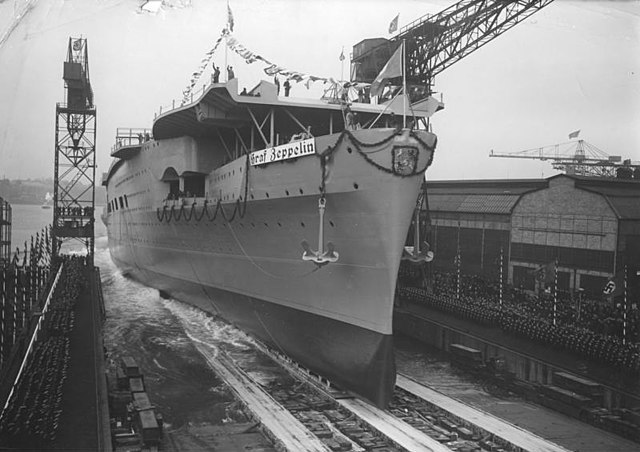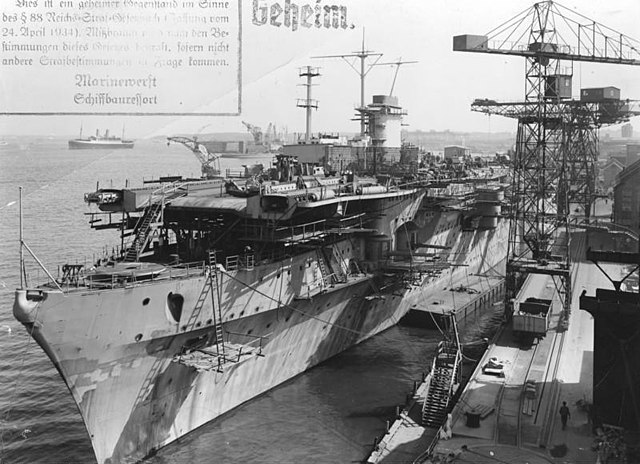Graf Zeppelin-class aircraft carrier
The Graf Zeppelin-class aircraft carriers were four German Kriegsmarine aircraft carriers planned in the mid-1930s by Grand Admiral Erich Raeder as part of the Plan Z rearmament program after Germany and Great Britain signed the Anglo-German Naval Agreement. They were planned after a thorough study of Japanese carrier designs. German naval architects ran into difficulties due to lack of experience in building such vessels, the situational realities of carrier operations in the North Sea and the lack of overall clarity in the ships' mission objectives.
Aircraft carrier Graf Zeppelin
Graf Zeppelin is launched, 8 December 1938.
Graf Zeppelin at Kiel, June 1940, displaying her newly rebuilt bow. Also visible are her 15 cm casemate guns, before their removal to defend occupied Norway. The photo is marked Geheim ("secret").
The position of Graf Zeppelin's superstructure in relation to the flight deck.
Plan Z was the name given to the planned re-equipment and expansion of the Kriegsmarine ordered by Adolf Hitler in early 1939. The fleet was meant to challenge the naval power of the United Kingdom, and was to be completed by 1948. Development of the plan began in 1938, but it reflected the evolution of the strategic thinking of the Oberkommando der Marine over the two decades following World War I. The plan called for a fleet centered on ten battleships and four aircraft carriers which were intended to battle the Royal Navy. This force would be supplemented with numerous long-range cruisers that would attack British shipping. A relatively small force of U-boats was also stipulated.
Emden, the first major warship built after World War I
Erich Raeder, commander of the Kriegsmarine until 1943
Graf Zeppelin at her launching
U-36, a Type VII U-boat







